Achars associated with meals can mainly be divided into three – achars to be followed before, during and after a meal. Achars to be followed during a meal and associated aspects are described in this article.
1. Why should men sit cross-legged while eating?
A man should sit for eating in a relaxed posture with his legs crossed (a relaxed posture). Sitting in a relaxed posture activates the subtle-gases and their flow commences in an unobstructed manner. Similarly, the triguna in the body also stabilize to some extent. Therefore, the sattvikta (Purity) imbibed by the individual from the food easily gets imbibed into its body and the physical and vital bodies get supply of adequate amount of energy.
Digestion of food is better when sitting cross-legged during meals. Specific posture of the thighs churns the food well in the abdomen. Since it requires bending forward, the muscles of the abdomen repeatedly contract and relax, thereby increasing the blood flow necessary for digestion. Similarly, it also helps in expulsion of gas created while eating.
2. Why should women sit with their right
knee drawn towards the stomach while eating?
Sitting with the right knee drawn towards the stomach helps in activation of the Manipur-chakra. This posture also helps control the movement of Raja-predominant thoughts, and the process of eating remains free from the creation of any distressing vibration. Therefore, women in the earlier times would sit with their right knee drawn towards their stomach while performing puja (Ritualistic worship) or while eating.
3. Serving food on plates or leaves
3 A. Recite ‘Trisuparna’ while
serving food on plates or leaves
Once serving of food begins, recite ‘Trisuparna’. The individual and others with him can also recite this. Trisuparna is a vedic hymn recited for purification of food. Those who cannot recite Trisuparna can recite ‘Shri Annapurna stotra’. If this is also not possible, chant the Name of your Deity of worship.
3 B. Method of serving food on a leaf/plate
Draw a mandal (Sheath) on the floor with water. Place the plate over it. Serve rice in the centre. Serve chewable (solid) food items on the left side of the individual who is about to eat. On the right side of the individual, serve items to which ghee has been added, such as payas. Serve vegetables and salad in the front portion of the plate
- Serve salt in the middle of the upper edge of the plate or the leaf.
- Beginning from the salt and to the left of the individual eating, serve a piece of lemon, pickle, coconut or any chutney, salad, kuradai or papad (Papadum) made of rice, bhajias made of rice flour and chapatis from top downwards. Serve ghee on the chapatis.
- Beginning from the salt on the right side of the individual eating, serve buttermilk, kheer or any sweet, curry and a vegetable, from top to bottom.
- Beginning from the centre of the plate and moving up, serve dal and rice, spicy rice, sweet rice or coconut rice and then curd rice in a straight line. Serve ghee on the dal and rice, spicy rice and sweet rice.
4. Prayer to be offered before the meal
4 A. Prayer
‘O God ! Let this food I have received by Your grace be eaten by me with a bhav (Spiritual emotion) that it is Your Prasad (Holy sacrament). May I be able to obtain the necessary Chaitanya and energy through this food to perform spiritual practice, Guruseva and strive to serve the Nation and Dharma. Let the distressing energy in me be eliminated quickly.’
4 B. Benefits of praying
- A payer offered at the beginning of a meal makes the individual Sattva-predominant. Consequently, it easily assimilates the natural subtle nutritional particles from the food. This helps the individual maintain good health.
- Praying to God, followed by offering food served in the plate to Him and then having that food destroys the Raja-Tama-predominant covering created around the plate.
- When the food is eaten after praying to God and when the food prepared while chanting is eaten as ‘Prasad’ of God, through its medium, Chaitanya enters the body and disintegrates the negative (contaminated) gas in the voids in the body.
- Mantriks use food as a medium while attacking seekers. In attacking seekers in this way, they spend less energy. The distressing energy that enters the body through food acts on the physical and subtle-bodies of the individual for a longer period. It becomes very easy for the mantriks to create seats in the annamaya-kosha and vasanamaya-kosha of the individual and enhance the distressing energy in the seats already present in the body.
5. Bhav to have while eating
After the prayer and before eating, it is necessary to have following bhav for the food and the Deity till the completion of the meal.
Offering food to God and eating it as His Prasad
- Most people offer the food served in their plate to God and then start eating.
- Some people offer the food in their plate to God and then eat it as His Prasad.
If food is eaten with the bhav that ‘I am offering this food to God and eating it as His Prasad’, greater amount of Chaitanya is imbibed. If there is no such bhav while eating, then there is a likelihood of attacks of negative energies.
6. Drawing a mandal of water around the plate
and placing a morsel of food outside the plate
Pray to the Deity of worship and draw a mandal of water around the plate by taking water in the right hand. Begin at the lower side of the plate and sprinkle water clockwise around the plate till the point of beginning is reached. This leads to congregation of Her blessing in the form of active waves into that mandal. Since water is all-encompassing, vibrations of the Deity get attracted into the shape of the mandal drawn by the individual while praying with bhav. These vibrations, in a way, create a protective sheath around the plate to prevent the attacks of negative energies. Thus, the process of eating becomes free from Raja-Tama components.
Some people take a little water in the palm and pour it near the plate, while some place one or five morsels of food outside the plate on the right side.
6 A. Objective is to repay the debt
The objective underlying pouring of water near the plate and placing a morsel of food outside the plate is to repay the debt of the Deities, Sages, ancestors and society. Everyone has to repay these debts. As a part of this process, some people pour water near the plate, while some place one or five morsels of food outside the plate on the right side.
6 B. Likelihood of distress due
to dissatisfied departed souls reduces
To place one or few morsels of food items outside the plate is an utara-form; it is a medium of satisfying our ancestors or other souls which are in the environment with desire for food. When they are first satisfied through the medium of food, the likelihood of distress due to these dissatisfied souls in the process of eating reduces.
7. Chanting God’s Name and praying
Begin chanting God’s Name and then commence eating. Continue to chant while eating and pray intermittently. Chanting the Name while eating makes the process of digestion easier. Food is Purnabrahman and is one that gives life. Eating food is not just filling the stomach but is a type of Yadnyakarma. Food that imparts life to us is Purnabrahman. Do not eat it merely for filling the stomach; offer it as oblation in the Yadnya of life, so that the energy obtained from that food will encourage you to perform good deeds and help others. Expect no fruit from this meritorious karma and offer it (the karma) to Shrihari so that your objective of eating food is fulfilled.
8. Aspects to keep in mind while serving food
- Instead of self-service, let the food be served by women.
- While serving food, care should be taken that the hand or the spoon used for serving the food does not touch the food or the plate of the individual who is eating. If the spoon touches the food or the plate of the individual, then it should be washed before use again or a fresh spoon should be used.
- Do not place the food bowls at the backside of or very close to the plate of the individuals who are eating.
9. General aspects associated with eating
- Preferably eat warm food as it kindles the jatharagni in the stomach and gets digested quickly. This makes the gas flow (a defect that is termed vata [Gas]) in the appropriate direction and reduces kapha (Phlegm). However, food should never be very hot.
- Ayurveda says that as a rule, food that has cooled should not be reheated and eaten.
- Food should be oily since it has good taste. It kindles the jatharagni in the stomach. Oily food gets digested quickly and makes vata flow in the appropriate direction. If taken in an appropriate proportion, it nurtures the body and semen is strengthened, thereby increasing the body strength.
- A meal should contain food items that have all the six tastes – sweet, sour, salty, pungent, bitter and astringent.
- If you feel that food served in the plate is in excess, then place the excess food in another plate before commencing to eat. If it is self-service, help yourself with only as much food as is required.
- Do not begin to eat unless all the food items have been served.
- In a row, people who have been served food should begin eating at the same time.

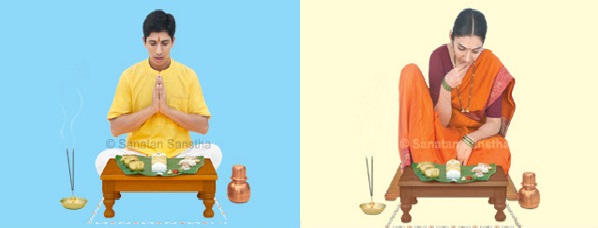
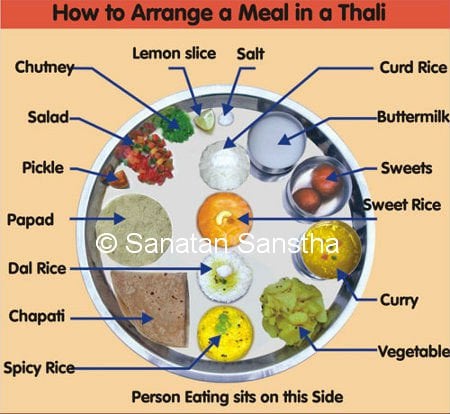
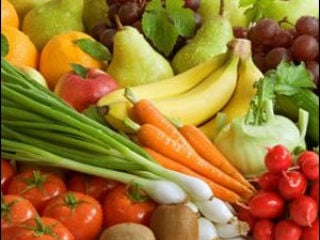 For healthy living avoid food that can cause antagonism due to contra-indications
For healthy living avoid food that can cause antagonism due to contra-indications Ill effects of artificial cold drinks
Ill effects of artificial cold drinks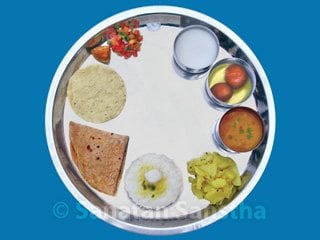 The connection between food and disease, important analysis on digestion
The connection between food and disease, important analysis on digestion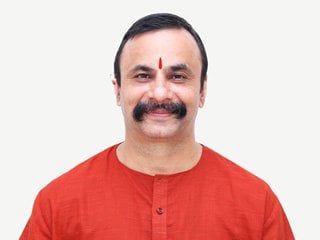 The method of preparing rice is important !
The method of preparing rice is important !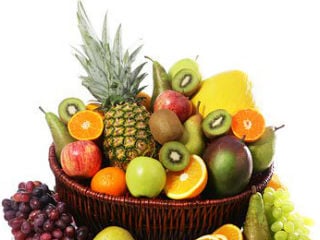 Give up junk food and embrace Ayurveda
Give up junk food and embrace Ayurveda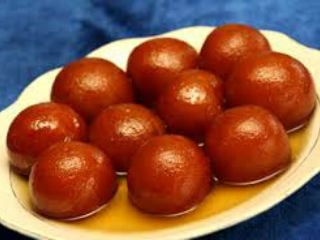 Should sweets be eaten at the beginning or end of a meal ?
Should sweets be eaten at the beginning or end of a meal ?
This is such a beautiful website. A great enlightenment about sanatan rituals and principles with their scientific basis. Great work. Please keep it alive in future too.